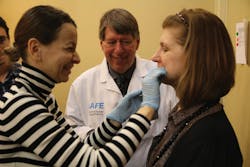When less is more
Louis Malcmacher, DDS, MAGD
Dental Economics published its annual fee analysis survey results in April.1 Every dentist should look at this for one simple reason: you must know your numbers if you are going to run a successful dental practice. Most dentists who look at their own fees make a mistake when they assume the services with the bigger fees are the most profitable services in their practices. Dentists are always on the hunt for “bigger” cases, assuming that $30,000 to $50,000 cases will be hugely profitable. But is this true? Let’s take a fresh look at this. To make this simple, let’s just look at the time and hard costs associated with the services a dental practice provides and analyze service profitability.
Bigger is not better
Let’s look at one of the most common procedures in dentistry, a two-appointment porcelain crown. I will use conservative estimates for fees, time, and hard costs to find a best-case scenario for profitability. According to the DE fee survey, a conservative fee for a crown would be $1,100. Under ideal circumstances, when everything goes right and you actually get a great impression the first time, the first appointment takes one hour at best, while the second seating appointment takes half an hour. Hard costs can be estimated as follows: impression material ($40), temporary material ($40), lab fee ($100), and cement ($25), for a total of $205. Take the fee ($1,100) and subtract the hard costs ($205). Divide the difference ($895) by 1.5 hours. This yields a profitability of $597 per hour, or nearly $10 per minute.
Just an aside—let’s not make the mistake of assuming that a 5-, 10-, or 20-unit case increases the profitability per crown. Every dentist who does bigger prosthodontic cases knows more units increase the time required per crown due to all of the planning time, laboratory consultation time, preparation time, and seating time that go into a multiunit case. For most cases, more units decrease the profitability per unit because of the time involvement needed. I have found that a dentist who does eight individual crowns in a day will have higher profitability than a dentist who does one big eight-unit crown and bridge case because of all the extra nonclinical time involved.
A patient treated with Botox, fillers, and PDO threadlifts displays smoother, slimmer, and better facial esthetics.
Bigger is better
Now let’s take a look at a skills-based service, such as Botox, dermal fillers, or solid-filler polydioxanone (PDO) threadlifts, to see how this compares to the single-unit porcelain crown. The hard costs related to these services are the cost of the pharmaceuticals. Let’s look at a common type of case, a patient who comes in for therapeutic or esthetic treatment of the forehead, glabella, smile lines, and masseter muscle treatment. Botox treatment is administered in a unit dosage, so conservatively, let’s say this patient needs a total of 70 units of Botox. The national patient fee range is $8 to $20 per Botox unit, so we will consider a conservative fee of $12 per Botox unit. The patient fee will be 70 units times the per-unit cost ($12), which equals $840. The cost of the Botox is approximately $6 per unit for a hard cost of $420. The profitability of this Botox procedure is the patient fee ($840) minus the hard cost ($420), which equals $420. Now here is the really interesting part: This Botox treatment is a 10-minute procedure. Compared to a crown, after hard costs, this equates to a productivity of $2,520 per hour, or $42 per minute. Dermal fillers and PDO threadlifts would have a similar productivity to Botox procedures with slightly more time involvement.
David Martin, DMD, mentors a clinician performing a lip enhancement.
Another major advantage to injectable procedures, such as Botox, is that there is no added complexity or time involvement if a patient wants more of the procedure to be done on the same day—it is usually easier. This makes these appointments even more profitable compared to a multiple-crown appointment.
Every dentist needs to know the real hourly profitability numbers for individual services and then look at his or her fee structure and mix of services. Dentists need to be trained in services that are popular among patients and that provide the highest profitability. Botox and dermal fillers are the first and second most requested patient procedures. Get trained today.
Reference
1. Schiff AM, Goodwin J. The Dental Economics annual fee survey. Dental Economics website. https://www.dentaleconomics.com/articles/print/volume-108/issue-4/macroeconomics/the-dental-economics-annual-fee-survey.html. Published April 1, 2018.
Louis Malcmacher, DDS, MAGD, is a practicing general dentist and an internationally known lecturer and author. He is president of the American Academy of Facial Esthetics (AAFE) and serves as a consultant to STATDDS. Contact him at (800) 952-0521 or [email protected].
author’s note:
Go to facialesthetics.orgto sign up for a free monthly e-newsletter or for information about live-patient Botox and dermal fillers training, PDO threadlifts, frontline TMJ and orofacial pain training, bruxism therapy, and dental sleep medicine.


